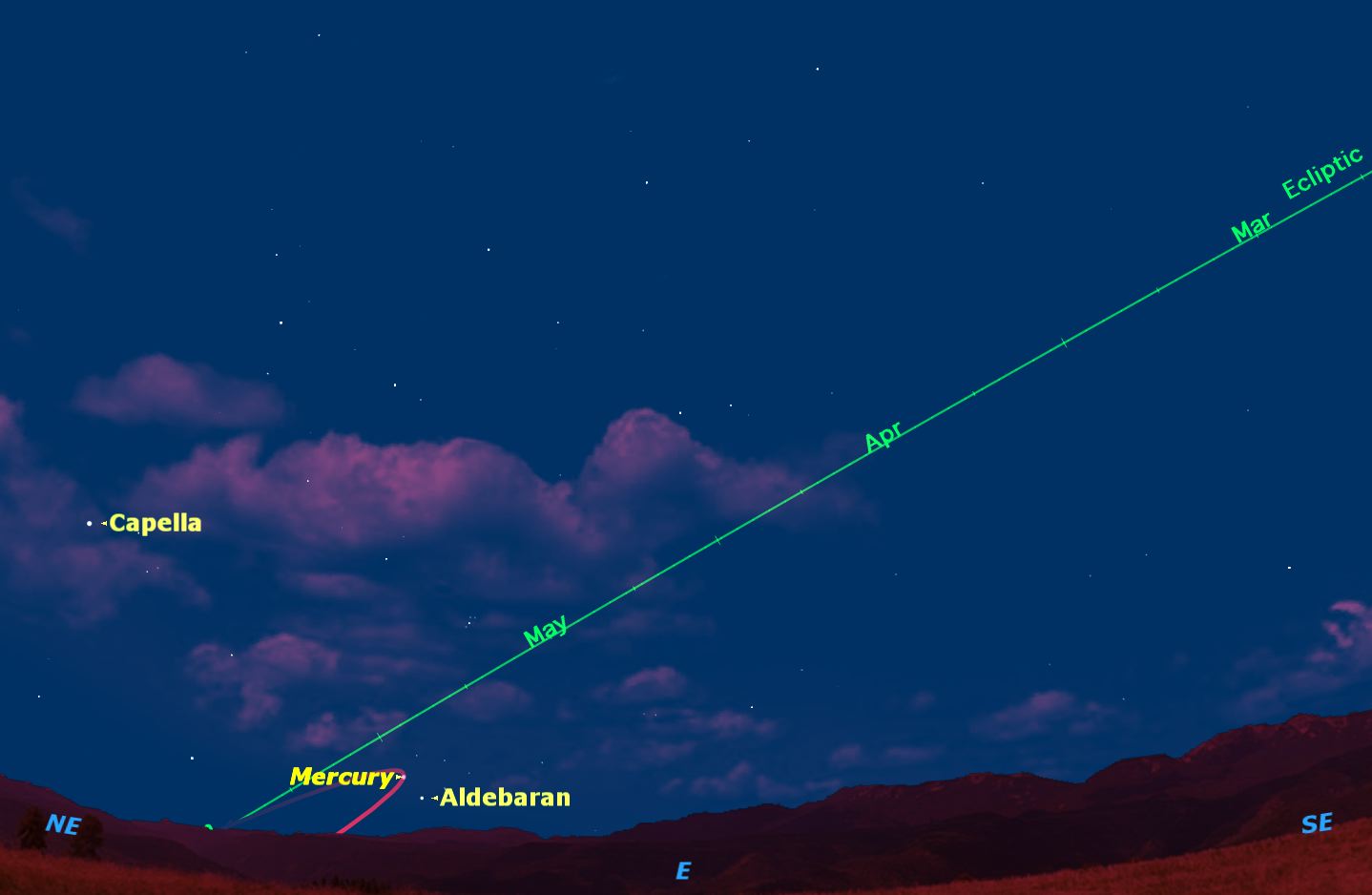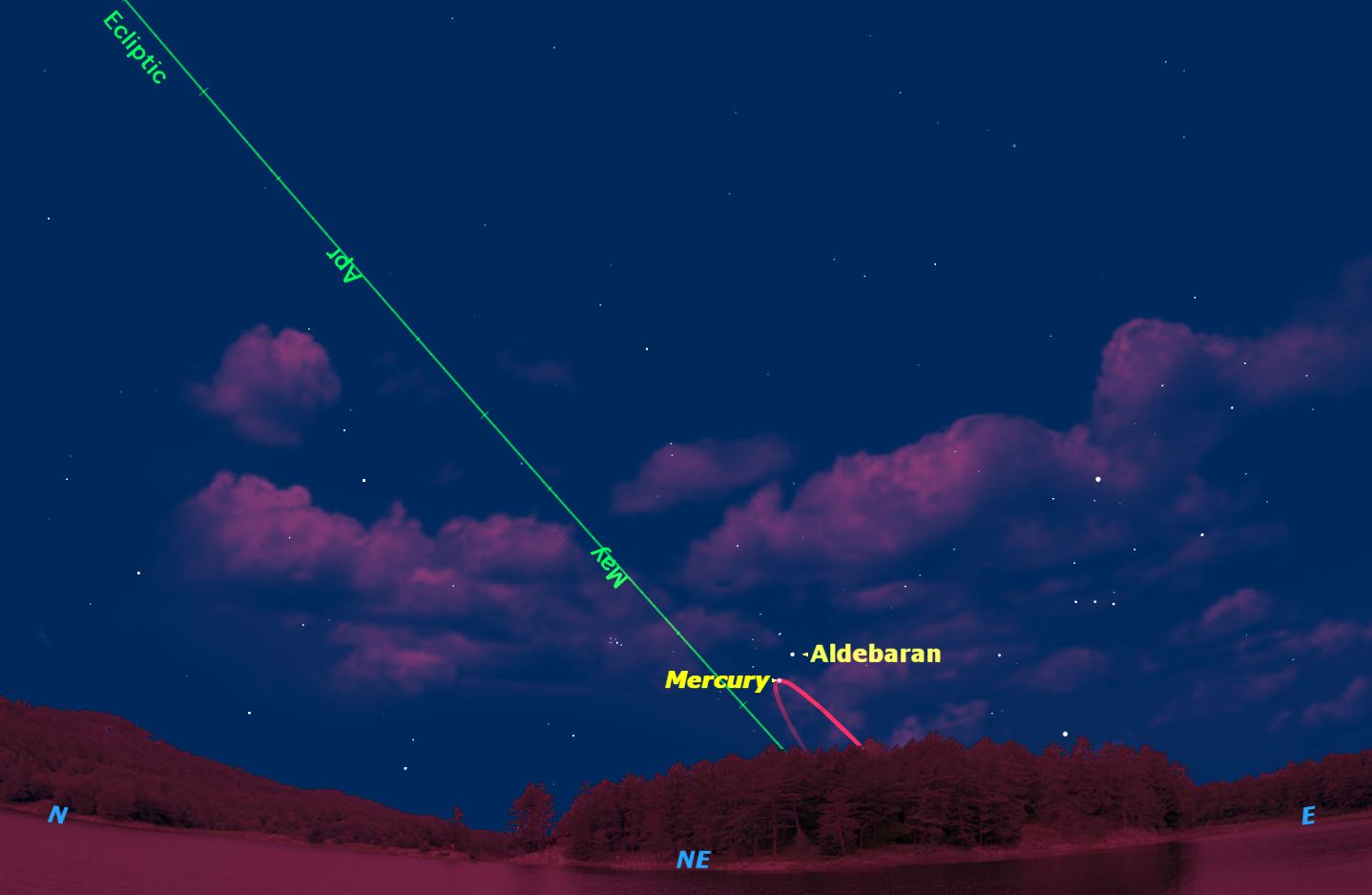Spot Elusive Planet Mercury in the Predawn Sky This Week

Mercury is a difficult object to spot, because it's always clinging closely to the sun’s apron strings. So you might be excused for missing its brief appearance this week in the predawn skies.
After many attempts to observe Mercury, I’ve found that the best time to spot it is about half an hour before sunrise in the morning sky, or half an hour after sunset in the evening sky. It’s always a balancing act between Mercury’s low altitude and the brightness of the background sky. I find 7x50 or 10x50 binoculars helpful in spotting Mercury, though once I’ve located Mercury in binoculars I usually have no trouble seeing it with the naked eye.
Because of the tilt of the ecliptic — the path the sun and planets follow across the sky — some apparitions of Mercury are more favorable than others. Usually apparitions that are favorable for observers in the Northern Hemisphere are unfavorable for observers in the Southern Hemisphere, and vice versa.
The tilt of the ecliptic would indicate that this current morning apparition — which runs through the next week or so — favors southern observers, but as you can see from these two views, it really isn’t much different; catching Mercury this week will be a challenge for observers everywhere in the world.
A secondary factor affecting Mercury’s visibility is the tilt and eccentricity of its orbit. At 7 degrees, Mercury’s tilt is greater than that of any other planet. The eccentricity of its orbit, which measures how far it deviates from a circle, is also the greatest, more than twice as eccentric as Mars’ orbit. (The dwarf planet Pluto, however, trumps Mercury in both tilt and eccentricity.)
The tilt this week also favors southern observers, as you can see in the charts. On them, Mercury’s orbit is marked in red and the ecliptic in green — but even this doesn’t help much.
So if you are successful in spotting Mercury in the next few days, congratulate yourself, and let us know here at Space.com.
Breaking space news, the latest updates on rocket launches, skywatching events and more!
Editor's note: If you capture an amazing view of Mercury or any other night sky sight that you'd like to share with Space.com, send photos and comments in to: spacephotos@space.com.
This article was provided to Space.com by Simulation Curriculum, the leader in space science curriculum solutions and the makers of Starry Night and SkySafari. Follow Starry Night on Twitter @StarryNightEdu. Follow us @Spacedotcom, Facebook and Google+. Original article on Space.com.

Geoff Gaherty was Space.com's Night Sky columnist and in partnership with Starry Night software and a dedicated amateur astronomer who sought to share the wonders of the night sky with the world. Based in Canada, Geoff studied mathematics and physics at McGill University and earned a Ph.D. in anthropology from the University of Toronto, all while pursuing a passion for the night sky and serving as an astronomy communicator. He credited a partial solar eclipse observed in 1946 (at age 5) and his 1957 sighting of the Comet Arend-Roland as a teenager for sparking his interest in amateur astronomy. In 2008, Geoff won the Chant Medal from the Royal Astronomical Society of Canada, an award given to a Canadian amateur astronomer in recognition of their lifetime achievements. Sadly, Geoff passed away July 7, 2016 due to complications from a kidney transplant, but his legacy continues at Starry Night.


